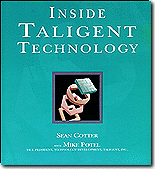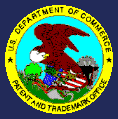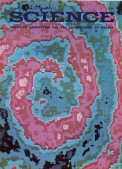 In 1997, Mike Potel and Cathy Frantz co-founded Wildcrest Associates, a Silicon Valley consultancy and software products company specializing in software technology and business consulting, intellectual property invetigations, and Internet and mobile components and applications.
In 1997, Mike Potel and Cathy Frantz co-founded Wildcrest Associates, a Silicon Valley consultancy and software products company specializing in software technology and business consulting, intellectual property invetigations, and Internet and mobile components and applications. Mike has been a member of the Editorial Board of IEEE Computer Graphics & Applications since 1989 and Associate Editor-in-Chief for Departments beginning in 2002. Since 1994, Mike has been Editor of the regular bimonthly feature, the "Applications" department. Here is a list of all the Applications department articles Mike has edited over that time. Mike writes the occasional feature himself, such as the November 1996 article highlighting Cathy's work on computer graphics & DNA sequencing, a January 1998 article about motion sickness in computer graphics systems, a January 2000 invited article on the future of computer graphics applications as part of the special IEEE CG&A "Vision 2000" issue, the November 2004 tenth anniversary retrospective article "A Decade of Applications", a March 2012 "From the Editor" article entitled "CG&A's Departments", the November 2014 twentieth anniversary article "Visualizing 20 Years of Applications" co-authored with Pak Chung Wong, and the November 2024 thirtieth (!) anniversary article "Thirty Years of Applications".
Mike has been a member of the Editorial Board of IEEE Computer Graphics & Applications since 1989 and Associate Editor-in-Chief for Departments beginning in 2002. Since 1994, Mike has been Editor of the regular bimonthly feature, the "Applications" department. Here is a list of all the Applications department articles Mike has edited over that time. Mike writes the occasional feature himself, such as the November 1996 article highlighting Cathy's work on computer graphics & DNA sequencing, a January 1998 article about motion sickness in computer graphics systems, a January 2000 invited article on the future of computer graphics applications as part of the special IEEE CG&A "Vision 2000" issue, the November 2004 tenth anniversary retrospective article "A Decade of Applications", a March 2012 "From the Editor" article entitled "CG&A's Departments", the November 2014 twentieth anniversary article "Visualizing 20 Years of Applications" co-authored with Pak Chung Wong, and the November 2024 thirtieth (!) anniversary article "Thirty Years of Applications". Mike was the Vice President of Technology and Chief Technology Officer at Taligent, Inc. Taligent was founded in March 1992 as a joint venture between Apple and IBM and joined by Hewlett-Packard in January 1994. Its goal was to develop a fully object-oriented operating system and portable application environment, which shipped in July 1995 as the CommonPoint Application System (see this brief history of Taligent).
Mike was the Vice President of Technology and Chief Technology Officer at Taligent, Inc. Taligent was founded in March 1992 as a joint venture between Apple and IBM and joined by Hewlett-Packard in January 1994. Its goal was to develop a fully object-oriented operating system and portable application environment, which shipped in July 1995 as the CommonPoint Application System (see this brief history of Taligent).
In January 1996, IBM took over sole ownership of Taligent and in January 1998 formally merged Taligent into IBM. During this phase, Taligent changed its focus to the Java platform with products such as the VisualAge WebRunner Toolkit (see Mike's technical paper describing its Model View Presenter (MVP) programming model). Taligent's international class libraries were licensed by Sun and have been part of Java since JDK 1.1 and subsequently licensed by others such as Netscape and Oracle. Sun also licensed Taligent's 2D graphics class libraries which were added to Java in JDK 1.2 and Taligent's JavaBeans Migration Assistant for ActiveX development tool.
The complete Taligent developer documentation, including manuals, class and member descriptions, and documented sample programs are available on-line at CERN (also mirrored here).
The complete set of Taligent US patents (161 as of March 2005) are available on-line at the US Patent and Trademark Office (+ 208 EPO and PCT patents available on-line at Delphion).
 In 1995, Mike co-authored the book Inside Taligent Technology, which provides a comprehensive description of the object-oriented technology underlying the CommonPoint application system built by Taligent. Over 160 US patents were awarded to members of the Taligent team for this work.
In 1995, Mike co-authored the book Inside Taligent Technology, which provides a comprehensive description of the object-oriented technology underlying the CommonPoint application system built by Taligent. Over 160 US patents were awarded to members of the Taligent team for this work.
The front sections and first two chapters were made available for web publication with the kind permission of Addison-Wesley.
Click here to view Barnes & Noble's description and ordering information. Click here to view Amazon.com's description and ordering information.
 Mike was at Apple Computer from 1985 to 1992. Until 1987 was Engineering Manager in Apple's Advanced Technology Group and worked for Larry Tesler. His group was responsible for key Macintosh graphics and sound technologies including Color QuickDraw, the first Macintosh Color Display Card, the Macintosh Sound Manager, and the Apple Sound Chip, as well as development tools such as MacApp and HyperCard. He then became Senior Director of Software Engineering in Product Development where he was responsible for all Macintosh System Software and Development Tools. He initiated both Macintosh System 7.0 and the "Pink" project that gave rise to Taligent and shipped such Apple products as QuickTime, TrueType, HyperCard, A/UX, AppleScript, MacApp, and the Macintosh Programmer's Workshop (MPW).
Mike was at Apple Computer from 1985 to 1992. Until 1987 was Engineering Manager in Apple's Advanced Technology Group and worked for Larry Tesler. His group was responsible for key Macintosh graphics and sound technologies including Color QuickDraw, the first Macintosh Color Display Card, the Macintosh Sound Manager, and the Apple Sound Chip, as well as development tools such as MacApp and HyperCard. He then became Senior Director of Software Engineering in Product Development where he was responsible for all Macintosh System Software and Development Tools. He initiated both Macintosh System 7.0 and the "Pink" project that gave rise to Taligent and shipped such Apple products as QuickTime, TrueType, HyperCard, A/UX, AppleScript, MacApp, and the Macintosh Programmer's Workshop (MPW). While at Apple, Mike developed the inverse color look-up table technique and the method for computing it efficiently for color dithering that were key parts of the 2 US Patents awarded to the team that developed Color QuickDraw for the Macintosh, used in all Macintosh computers since 1987. The US Patent and Trademark Office on-line patent database summaries are:
While at Apple, Mike developed the inverse color look-up table technique and the method for computing it efficiently for color dithering that were key parts of the 2 US Patents awarded to the team that developed Color QuickDraw for the Macintosh, used in all Macintosh computers since 1987. The US Patent and Trademark Office on-line patent database summaries are:5,068,644 Color graphics system
5,003,299 Method for building a color look-up table
 Mike attended graduate school at the University of Chicago where he got his M.S. and Ph.D. in the Committee on Information Sciences (later renamed the Department of Computer Science). He subsequently joined the faculty in the Department of Biophysics and Theoretical Biology where he founded the University of Chicago Computer Graphics and Image Processing Laboratory and rose to the rank of Research Associate, Associate Professor.
Mike attended graduate school at the University of Chicago where he got his M.S. and Ph.D. in the Committee on Information Sciences (later renamed the Department of Computer Science). He subsequently joined the faculty in the Department of Biophysics and Theoretical Biology where he founded the University of Chicago Computer Graphics and Image Processing Laboratory and rose to the rank of Research Associate, Associate Professor. Mike used the image processing system he developed at the University of Chicago to create the images of propagating cAMP waves in aggregating cellular slime molds that appeared on the cover of Science as well as being featured in the ACM SIGGRAPH 1982 slide set.
Mike used the image processing system he developed at the University of Chicago to create the images of propagating cAMP waves in aggregating cellular slime molds that appeared on the cover of Science as well as being featured in the ACM SIGGRAPH 1982 slide set. Mike attended the University of Michigan in Ann Arbor where he received his B.S. in Mathematics in 1970 and got into computing and his first programming positions.
Mike attended the University of Michigan in Ann Arbor where he received his B.S. in Mathematics in 1970 and got into computing and his first programming positions.